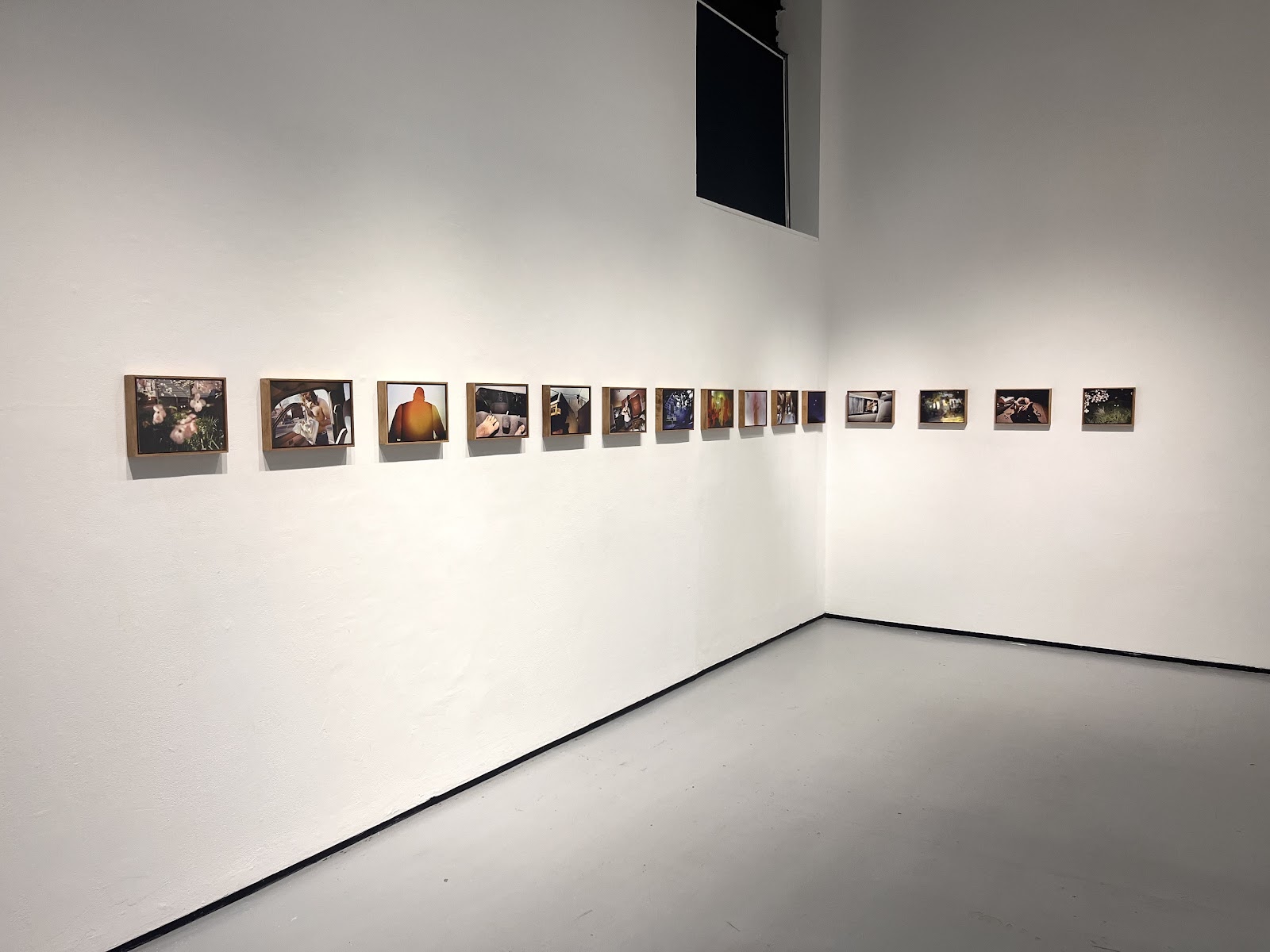Photography MFA Thesis Exhibition challenges the digital gaze and captures the present through analog
The Photography MFA Thesis Exhibition was on display at the School of Art from April 12 to April 19. The exhibition embodied a nostalgia for older methods of capturing moments in life.

Courtesy of David Billet
Titled “First Breath Second Sight,” the Photography MFA Thesis Exhibition is currently on display at the Yale School of Art. The exhibition, dominated by black-and-white photographs created using analogue methods, seems to question the digital world we live in today.
The exhibition includes the works of 10 artists — Vani Bhushan ART ’25, David Billet ART ’25, Bella Convertino ART ’25, Olivia Crumm ART ’25, Christopher Desanges ART ’25, Luis Diaz ART ’25, Jeremy Grier ART ’25, Leor Miller ART ’25, Aliaksandra Tucha ART ’25 and Yumeng Zhu ART ’25.
“It seems to me that there is a reaction against living in a virtual space, living in a digital space, where people want to do things with their hands,” said Lisa Kereszi ART ʼ00, the assistant director of graduate studies in photography.
Students chose methods and materials that seemed to reflect this sentiment. Analog methods of photography, such as camera obscura and pinhole cameras, were the preferred techniques for some of the students.
Contact prints, handmade frames and cathode ray tube TVs also gestured to a nostalgic attitude toward the medium.
John Pilson ART ʼ93, a senior critic in photography, also noticed this theme amongst the pieces. He noted that, although the show is not curated, there is “always something shared” across the pieces.
“This is a generation that grew up on the internet, pretty much all of them — and there have been questions about the fate of the medium,” said Pilson.
This year’s photography MFA cohort consists only of 10 students, all of whom have worked collaboratively to put on the group show. Kereszi said that the students are essentially left to their own devices for the exhibition, deciding among themselves “what goes where.”
“If it’s curatorial, it’s cosmically curatorial,” said Pilson.
“And Titled” by Aliaksandra Tucha ART ’25 can be found on the first floor of the gallery. The piece consists of a bound pile of envelopes on a pedestal. The accompanying description reads, “envelopes, one per thief, printed matter inside,” seemingly daring the viewer to “steal” an envelope.

Tucha’s other piece in the show is an audio-visual installation. It features a one-minute and 20-second-long film in a foreign language, followed by intermittent audio of barely discernible sounds.
“I invite the viewer to be a ‘thief’ of an envelope with printed matter from a stack. A lot of the best things – a kiss, a journey, a victory – are a risk, and I wanted to recreate this thrilling sense,” Tucha wrote in an email to the News.
Tucha created this work a week before the show, abandoning the “safe route” of displaying photographs, which she said would have felt like a waste.
The photography students are always encouraged by their professors to do this kind of experimentation.
“This is a public show, but it’s also kind of a lab,” said Kereszi.
Also on the first floor is a series of photographs by Luis Manuel Diaz ART ’25, which feature construction sites and materials.


To create his images, Diaz used a camera obscura — a device that projects an upside-down image when light passes through a small hole into a darkened room. These works also include techniques that make use of and control light exposure.
“I’m thinking a lot about visibility, in terms of unseen labor, who’s behind the labor. But also these sites as sites of discovery,” said Diaz.
The final piece of Diaz’s series is a contact print, which is a photograph created by layering a film negative on photographic paper and exposing it to light. The gesture captures the “real time” behind the photos, said Diaz.
Leor Miller ART ’25, whose work was also included in the show, similarly used an analog method to capture her photographs. Miller’s work consists of six large prints, most captured using a pinhole camera, that can be found on the Mezzanine level.
“My photographs approach the world as a space of mystery. I work primarily with pinhole and panoramic cameras in order to question the historical role photography has played in depicting the earth and its human subjects as stable, knowable entities,” Miller wrote in an email to the News.

In one of Miller’s pieces, “Untitled (Floaters),” small, white, star-like shapes can be seen in the photographs, which are the result of static electricity present when Miller was developing the image.
One of the few pops of color in the show can be found on the basement level. David Billet ART ’25 describes his work as “moments in which I found something real — something beautiful — amongst the chaos.”

Every frame was handmade by Billet. One photograph that lives in this frame is titled “My Camera (Timmy in My Bedroom).” The string of photos captures images of various body parts, rooms and nature.
To Billet and the other students, photography holds the power to convey real experiences. The physical manifestation of those moments, the printed photograph, contains undeniable truths about life.
“Art photographers benefit wildly from the fact that photography still, in the public imagination, has this special relationship to the truth. We are in a moment where the very concept of truth has been run through a meat grinder, and that unique relationship of the medium to a concept like truth is being felt and responded to collectively by them,” said Pilson.
The graduate students’ commencement ceremony will take place May 19.







